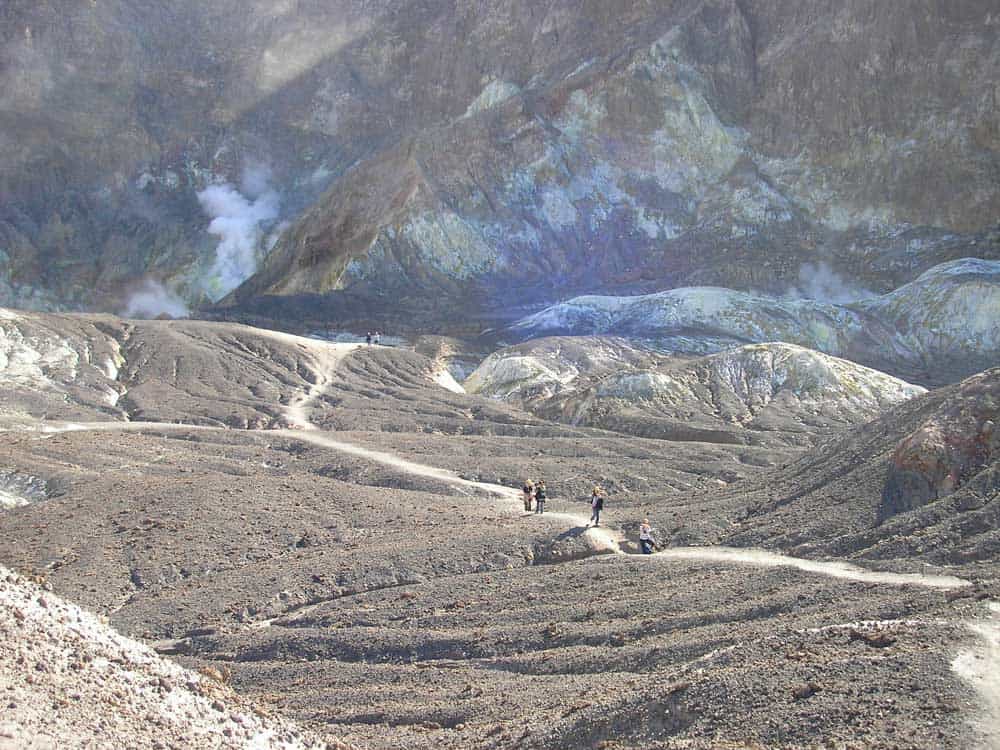Text & photos by Janice Strong
It was a glorious day to be on the water. The sun was shining, not a cloud in the sky, as we skimmed over the waves to White Island, a 90-minute cruise from Whakatane, on New Zealand’s North Island.
 Janice Strong
Janice Strong Janice StrongCaptain Cook was the first European to see White Island, as he sailed past aboard the Endeavour in 1769. In those days it was known to the Maori as Whakaari, meaning “that which can be made visible” allegedly because the island disappears on hazy days, only to reappear when the weather is clear.
Janice StrongCaptain Cook was the first European to see White Island, as he sailed past aboard the Endeavour in 1769. In those days it was known to the Maori as Whakaari, meaning “that which can be made visible” allegedly because the island disappears on hazy days, only to reappear when the weather is clear.
To get to the island, we had to climb aboard inflatables that ferried us to the landing site where we scrambled up a ladder and over boulders to get to the slopes of the volcano. That’s right, White Island is New Zealand’s only live marine volcano. It’s also a fascinating, and accessible place. Janice StrongAfter donning hard hats and gas masks (we only used them when we felt the need), we were off on a two-hour walk to see the sights, sounds and smells of a live volcano.
Janice StrongAfter donning hard hats and gas masks (we only used them when we felt the need), we were off on a two-hour walk to see the sights, sounds and smells of a live volcano.
And the view is pretty bleak. Nothing grows in this harsh atmosphere, but the rock formations, sulphur crystal formations have a beauty all their own. We went up to the edge of main crater and looked through the steam to the lake below. We stopped at boiling mud pots, looked at steaming vents and wandered through the remains of man’s presence on the island. Janice Strong
Janice Strong
 Janice Strong
Janice Strong
 Janice Strong
Janice Strong
In the late 19th and early 20th centuries White Island was a commercial mine site, producing sulphur for manure and later for the production of sulphuric acid. Over the years the mining operations survived one of the greatest volcanic eruptions of all time (causing the island to be abandoned) and the slumping of the main crater wall (wiping out all the buildings and men who lived in them), but men persevered, changing hands several times. In fact, it was the Depression in the 1930s that was the final undoing of commercial endeavours on White Island.
 Janice StrongIn 1936 George Raymond Buttle, a sharebroker from Auckland, acquired White Island and today it is owned by the Buttle Family Trust.
Janice StrongIn 1936 George Raymond Buttle, a sharebroker from Auckland, acquired White Island and today it is owned by the Buttle Family Trust.
Back in the day, the new owner commented that “he rather liked the idea of owning a volcano”. Later, he wrote: “I am setting the impossible task of trying to let you have some idea of the fascination that White Island has for us…. Strange as it may seem, the island is unbelievably beautiful and beyond description. Surely it is one of the wonders of the world….”
I whole-heartedly agree.


